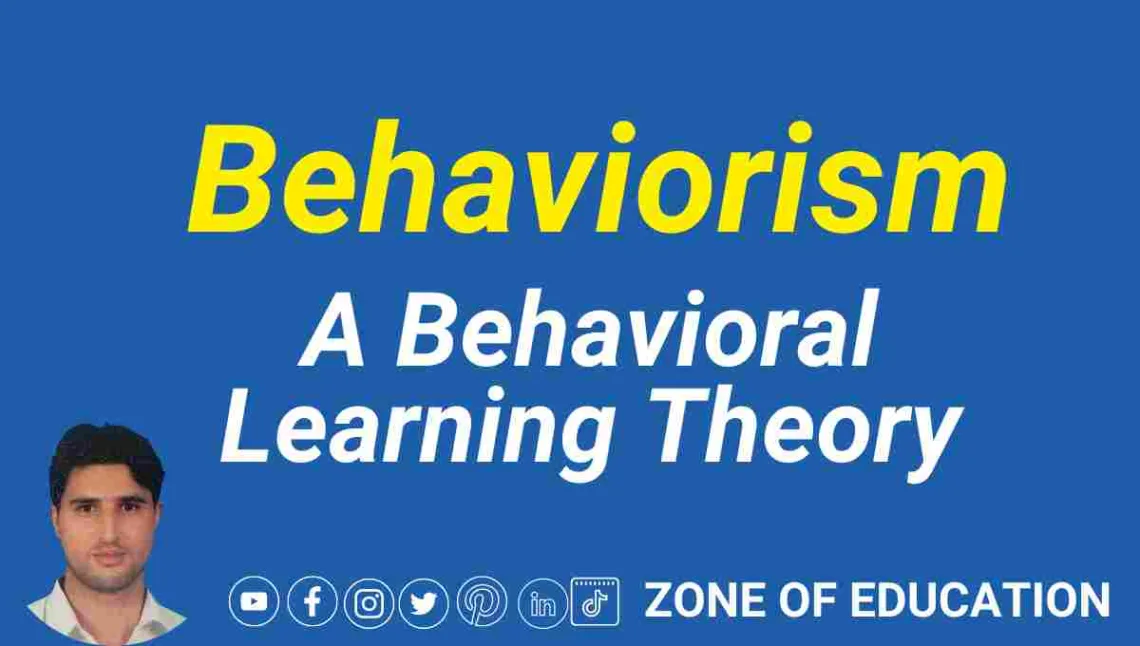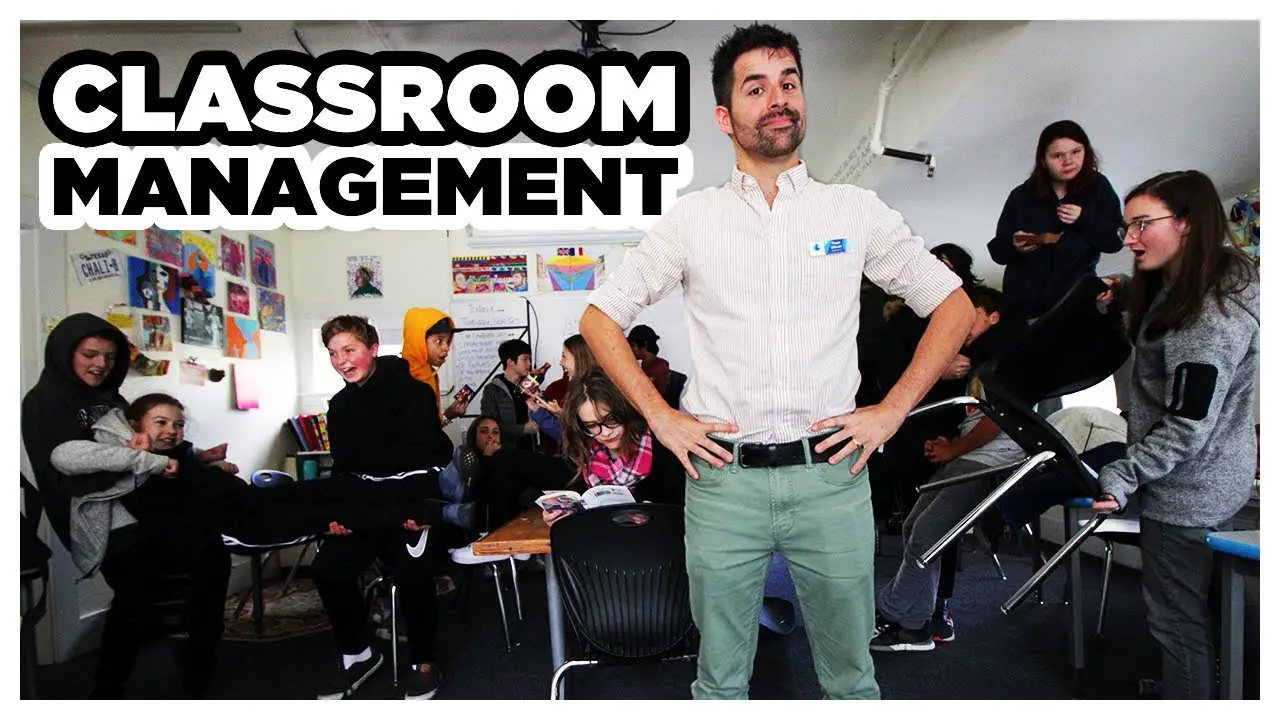Behaviorism is a theory that suggests that the environment shapes human behavior. It’s a systematic approach to understanding the behavior of humans and other animals.
Behaviorism is a psychological learning theory that focuses on observable behaviors and how they are influenced by environmental stimuli. This theory suggests that individuals learn new behaviors through conditioning, which involves associations between stimuli and responses.
Key figures in behaviorism include Ivan Pavlov, John B. Watson, and B.F. Skinner, who conducted experiments to demonstrate how behavior can be shaped through reinforcement and punishment. Behaviorism has been applied in various fields, such as education, therapy, and animal training, to understand and modify behavior effectively.
Behaviorism focuses on external observable behaviors, explained through principles like conditioning, reinforcement, punishment rather than internal mental states. While influential, it fails to account for the full complexity of human learning and experience.
Key aspects of behaviorism as a psychological learning theory:
Introduction to Behaviorism
- Developed in the early 20th century as a theory of learning based on observable behaviors and actions rather than internal mental states or consciousness
- Founded by psychologists like John B. Watson, B.F. Skinner, Ivan Pavlov
- Focuses on conditioning behaviors through reinforcement and punishment
Key Principles
- Behavior is shaped by positive and negative reinforcements from the external environment rather than internal mental processes
- All behaviors are acquired through conditioning
- Conditioning occurs through association, reinforcement and punishment
Classical Conditioning
- Associating a natural reflex with a new neutral stimulus results in a learned reflexive behavior
- Ex: Associating the sound of a bell (originally a neutral stimulus) with the presentation of food (natural reflex of salivating) results in a conditioned response of salivating at the sound of the bell
- Using reinforcement and punishment to modify voluntary behaviors
- Ex: Giving treats and praise (positive reinforcement) for a dog sitting on command increases the likelihood the behavior will be repeated
Contributions and Criticisms
- Provided scientific framework for studying how behaviors are learned and modified
- Principles of reinforcement widely applied (education, animal training)
- Ignores complex human cognitive abilities, emotions, creativity
Behaviorism is a branch of psychology that focuses on how people learn through their interactions with the environment. It’s based on the idea that all behaviors are acquired through conditioning, which is a process of reinforcement and punishment.
Behaviorism has two types of conditioning:
- Classical Conditioning
- Operant Conditioning Radical Behaviorism
It assumes that behavior is either a reflex evoked by the pairing of certain antecedent stimuli.
Behaviorism has guided educators over the years in thinking about strategies to change behavior. Lessons learned from Behaviorism have shown that rewards are key to changing unacceptable behavior to acceptable behavior.
In defining behavior, behaviorist learning theories emphasize changes in behavior that result from stimulus-response associations made by the learner. John B. Watson (1878-1958) and B. F. Skinner (1904-1990) are the two principal originators of behaviorist approaches to learning.
Watson believed that human behavior resulted from specific stimuli that elicited certain responses. Watson’s basic premise was that conclusions about human development should be based on observation of overt behavior rather than speculation about subconscious motives or latent cognitive processes (Shaffer, 2000). Watson’s view of learning was based in part on the studies of Ivan Pavlov (1849-1936).
Pavlov was well known for his research on a learning process called classical conditioning. Classical conditioning refers to learning that occurs when a neutral stimulus becomes associated with a stimulus that naturally produces a behavior. Skinner believed that seemingly spontaneous action is regulated through rewards and punishment.
Skinner believed that people don’t shape the world, but instead, the world shapes them. Skinner also believed that human behavior is predictable, just like a chemical reaction. He is also well known for his “Skinner box,” a tool to demonstrate his theory that rewarded behavior is repeated.
What is Behaviorism?
Behaviorism is primarily concerned with observable and measurable aspects of human behavior.
In defining behavior, behaviorist learning theories emphasize changes in behavior that result from stimulus-response associations made by the learner. Behavior is directed by stimuli. An individual selects one response instead of another because of prior conditioning and psychological drives existing at the moment of the action.
Behaviorists assert that the only behaviors worthy of study are those that can be directly observed; thus, it is actions, rather than thoughts or emotions, which are the legitimate object of study.
Behaviorist theory does not explain abnormal behavior in terms of the brain or its inner workings. Rather, it posits that all behavior is learned habits, and attempts to account for how these habits are formed.
To assuming that human behavior is learned, behaviorists also hold that all behaviors can also be unlearned, and replaced by new behaviors; that is, when a behavior becomes unacceptable, it can be replaced by an acceptable one.
A key element of this theory of learning is the rewarded response. The desired response must be rewarded for learning to take place . In education, advocates of behaviorism have effectively adopted this system of rewards and punishments in their classrooms by rewarding desired behaviors and punishing inappropriate ones.
Rewards vary but must be important to the learner in some way. For example, if a teacher wishes to teach the behavior of remaining seated during the class period, the successful student’s reward might be stars in notebook, verbal appriciations , running an errand, or being allowed to go to the library to do homework at the end of the class period. As with all teaching methods, success depends on each student’s stimulus and response, and associations made by each learner.
John B. Watson Advocater of Behaviorism (Methodological Behaviorism by Watson)
The 1913 publication of John B. Watson’s classic paper, “Psychology as the Behaviorist Views It,” marked the formal establishment of behaviorism. The easiest way to put it is in this quotation from Watson, who is often considered to be the behaviorist’s father:
“Give me twelve healthy babies and a place to raise them, and I’ll prove that I can turn any one of them into whatever I want—whether it’s a doctor, lawyer, artist, business leader, or even someone who lives by begging or stealing. It doesn’t matter where they come from or what they’re naturally good at.”
John B. Watson (1878-1958) and B. F. Skinner (1904-1990) are the two principal originators of behaviorist approaches to learning. Watson believed that human behavior resulted from specific stimuli that elicited certain responses.
Watson’s basic premise was that conclusions about human development should be based on observation of overt behavior rather than speculation about subconscious motives or latent cognitive processes. Watson’s view of learning was based in part on the studies of Ivan Pavlov (1849-1936).
Pavlov was studying the digestive process and the interaction of salivation and stomach function when he realized that reflexes in the autonomic nervous system closely linked these phenomena.
To determine whether external stimuli affected this process, Pavlov rang a bell when he gave food to the experimental dogs. He noticed that the dogs salivated shortly before they were given food. He discovered that when the bell was rung at repeated feedings, the sound of the bell alone (a conditioned stimulus) would cause the dogs to salivate (a conditioned response).
Pavlov also found that the conditioned reflex was repressed if the stimulus proved “wrong” too frequently; if the bell rang and no food appeared, the dog eventually ceased to salivate at the sound of the bell
Classical Conditioning (Ivan Pavlov: 1849-1936)
This illustration shows the steps of Classical Conditioning.
- Food = salivation
- Food + Stimulus = salivation (conditioned stimulus)
- Bell alone produces salivation (conditioned response)
Expanding on Watson’s basic stimulus-response model, Skinner developed a more comprehensive view of conditioning, known as operant conditioning. His model was based on the premise that satisfying responses are conditioned, while unsatisfying ones are not.
Operant conditioning is the rewarding of part of a desired behavior or a random act that approaches it.
B.F. Skinner Operant Conditioning– Radical Behaviorism
Operant conditioning, also known as instrumental conditioning, is a theory of learning in psychology. It posits that behavior is influenced by its consequences. Let’s delve into the fascinating work of B.F. Skinner, who significantly contributed to our understanding of operant conditioning.
The Basics of Operant Conditioning:
Behavior that is reinforced (rewarded) tends to be repeated, while behavior that is punished occurs less frequently. Skinner believed that studying observable behavior rather than internal mental events was more productive. He introduced the concept of reinforcement, which strengthens behavior that is followed by pleasant consequences and weakens behavior that is not reinforced.
Skinner’s Experiments:
In the 1940s, Skinner conducted experiments using animals placed in a device called a “Skinner Box” (also known as an operant conditioning chamber). The Skinner Box allowed objective recording of an animal’s behavior within a compressed time frame. Animals could be rewarded or punished for specific actions, such as lever pressing for rats or key pecking for pigeons.
Types of Responses:
Neutral operants: These responses from the environment neither increase nor decrease the likelihood of a behavior being repeated.
Reinforcers: These responses increase the probability of behavior repetition. Reinforcers can be either positive or negative.
Punishers: These responses decrease the likelihood of behavior repetition.
Application:
We all encounter operant conditioning in our lives.
As children, we learn from the consequences of our actions. Skinner’s work emphasized understanding behavior by examining its causes and outcomes. Operant conditioning provides valuable insights into how our actions are shaped by reinforcement and punishment. Skinner’s research continues to influence psychology and our understanding of human behavior. Skinner remarked that “the things we call pleasant have an energizing or strengthening effect on our behavior”.
Through Skinner’s research on animals, he concluded that both animals and humans would repeat acts that led to favorable outcomes, and suppress those that produced unfavorable results.
If a rat presses a bar and receives a food pellet, he will be likely to press it again. Skinner defined the bar-pressing response as operant, and the food pellet as a reinforcer.
Punishers, on the other hand, are consequences that suppress a response and decrease the likelihood that it will occur in the future. If the rat had been shocked every time, it pressed the bar that behavior would cease.
Skinner believed the habits that each of us develops result from our unique operant learning experiences.

Operant Conditioning (B. F. Skinner: 1904-1990)
This illustration illustrates Operant Conditioning. The mouse pushes the lever and receives a food reward. Therefore, he will push the lever repeatedly in order to get the treat.
Behaviorist techniques have long been employed in education to promote behavior that is desirable and discourage that which is not. Among the methods derived from behaviorist theory for practical classroom application are contracts, consequences, reinforcement, extinction, and behavior modification.
Contracts, Consequences, Reinforcement, and Extinction in Behavoiorsm
Simple contracts can be effective in helping children focus on behavior change. The relevant behavior should be identified, and the child and counselor should decide the terms of the contract. Behavioral contracts can be used in school as well as at home. It is helpful if teachers and parents work together with the student to ensure that the contract is being fulfilled. Two examples of behavior contracts are listed below:
A student is not completing homework assignments. The teacher and the student design a contract providing that the student will stay for extra help, ask parents for help, and complete assigned work on time. The teacher will be available after school, and during free periods for additional assistance.
A student is misbehaving in class. The teacher and student devise a behavioral contract to minimize distractions. Provisions include that the student will be punctual, will sit in front of the teacher, will raise hand with questions/comments, and will not leave his seat without permission.
Consequences occur immediately after a behavior, Consequences may be positive or negative, expected or unexpected, immediate or long-term, extrinsic or intrinsic, material or symbolic (a failing grade), emotional/interpersonal or even unconscious.
Consequences occur after the “target” behavior occurs, when either positive or negative reinforcement may be given. Positive reinforcement is presentation of a stimulus that increases the probability of a response. This type of reinforcement occurs frequently in the classroom. Teachers may provide positive reinforcement by:
- Smiling at students after a correct response
- Commending students for their work
- Selecting them for a special project
- Praising students’ ability to parents
Negative reinforcement increases the probability of a response that removes or prevents an adverse condition. Many classroom teachers mistakenly believe that negative reinforcement is punishment administered to suppress behavior; however, negative reinforcement increases the likelihood of a behavior, as does positive reinforcement. Negative implies removing a consequence that a student finds unpleasant. Negative reinforcement might include:
- Obtaining a score of 80% or higher makes the final exam optional
- Submitting all assignments on time results in the lowest grade being dropped
- Perfect attendance is rewarded with a “homework pass.”
Punishment involves presenting a strong stimulus that decreases the frequency of a particular response. Punishment is effective in quickly eliminating undesirable behaviors. Examples of punishment include:
Students who fight are immediately referred to the principal
- Late assignments are given a grade of “0;”
- Three tardies to class results in a call to the parents
- Failure to do homework results in after-school detention (privilege of going home is removed)
| Type | Positive (Something is added) | Negative (Something is removed) |
|---|---|---|
| Reinforcement (Behavior Increases) | Positive Reinforcement: Something is added to increase desired behavior. Ex: Smile and compliment student on good performance. | Negative Reinforcement: Something is removed to increase desired behavior. Ex: Give a free homework pass for turning in all assignments. |
| Punishment (Behavior Decreases) | Positive Punishment: Something is added to decrease undesired behavior. Ex: Give student detention for failing to follow the class rules. | Negative Punishment: Something is removed to decrease undesired behavior. Ex: Make student miss their time in recess for not following the class rules. |
Extinction decreases the probability of a response by contingent withdrawal of a previously reinforced stimulus. Examples of extinction are:
- A student has developed the habit of saying the punctuation marks when reading aloud.
- Classmates reinforce the behavior by laughing when he does so. The teacher tells the students not to laugh, thus extinguishing the behavior.
- A teacher gives partial credit for late assignments; other teachers think this is unfair; the teacher decides to then give zeros for the late work.
Students are frequently late for class, and the teacher does not require a late pass, contrary to school policy. The rule is subsequently enforced, and the students arrive on time.
Modeling, Shaping, and Cueing in Behaviourism
Modeling is also known as observational learning. Albert Bandura has suggested that modeling is the basis for a variety of child behavior. Children acquire many favorable and unfavorable responses by observing those around them. A child who kicks another child after seeing this on the playground, or a student who is always late for class because his friends are late is displaying the results of observational learning.

In this picture, the child is modeling the behavior of the adult. Children watch and imitate the adults around them; the result may be favorable or unfavorable behavior
Shaping is the process of gradually changing the quality of a response. The desired behavior is broken down into discrete, concrete units, or positive movements, each of which is reinforced as it progresses towards the overall behavioral goal. In the following scenario, the classroom teacher employs shaping to change student behavior: the class enters the room and sits down, but continue to talk after the bell rings. The teacher gives the class one point for improvement, in that all students are seated. Subsequently, the students must be seated and quiet to earn points, which may be accumulated and redeemed for rewards.
Cueing may be as simple as providing a child with a verbal or non-verbal cue as to the appropriateness of a behavior. For example, to teach a child to remember to perform an action at a specific time, the teacher might arrange for him to receive a cue immediately before the action is expected rather than after it has been performed incorrectly.
For example, if the teacher is working with a student that habitually answers aloud instead of raising his hand, the teacher should discuss a cue such as hand-raising at the end of a question posed to the class.
Behavior Modification in Behavourism
Behavior modification is a method of eliciting better classroom performance from reluctant students. It has six basic components:
- Specification of the desired outcome (What must be changed and how it will be evaluated?) One example of a desired outcome is increased student participation in class discussions.
- Development of a positive, nurturing environment (by removing negative stimuli from the learning environment). In the above example, this would involve a student-teacher conference with a review of the relevant material, and calling on the student when it is evident that she knows the answer to the question posed.
- Identification and use of appropriate reinforcers (intrinsic and extrinsic rewards). A student receives an intrinsic reinforcer by correctly answering in the presence of peers, thus increasing self-esteem and confidence.
- Reinforcement of behavior patterns develop until the student has established a pattern of success in engaging in class discussions.
- Reduction in the frequency of rewards-a gradual decrease the amount of one-on-one review with the student before class discussion.
- Evaluation and assessment of the effectiveness of the approach based on teacher expectations and student results. Compare the frequency of student responses in class discussions to the amount of support provided, and determine whether the student is independently engaging in class discussions. (Brewer, Campbell, & Petty, 2000)
Criticisms of Behaviorism
Behaviorism can be critiqued as an overly deterministic view of human behavior by ignoring the internal psychological and mental processes; behaviorism oversimplifies the complexity of human behavior. Some would even argue that the strict nature of radical behaviorism essentially defines human beings as mechanisms without free will.
The behaviorist approach has also been criticized for its inability to account for learning or changes in behavior that occur in the absence of environmental input; such occurrences signal the presence of an internal psychological or mental process.
Finally, research by ethologists has shown that the principles of conditioning are not universal, countering the behaviorist claim of equipotentiality across conditioning principles.
Behaviorism was developed as a counter to the introspective approach that relied primarily, if not entirely, on internal, self-reflection on conscious, mental activity. While radical behaviorism may be quite limited in its explanatory power, it served an important role in allowing psychology to develop a scientific pursuit of knowledge about human nature and behavior.
Nevertheless, the link between stimulus and response is not just a simple, direct, cause and effect relationship. Factors beyond the stimulus are involved in determining the response. Actions occur based on purpose, and purpose is determined by the mind of the subject. Thus, a more complete understanding of human behavior would need to include both the external actions of the body and the inner life of the mind.
Educational Implications of Behaviorism
Using behaviorist theory in the classroom can be rewarding for both students and teachers. Behavioral change occurs for a reason; students work for things that bring them positive feelings, and for approval from people they admire. They change behaviors to satisfy the desires they have learned to value. They generally avoid behaviors they associate with unpleasantness and develop habitual behaviors from those that are repeated often.
The entire rationale of behavior modification is that most behavior is learned. If behaviors can be learned, then they can also be unlearned or relearned. A behavior that goes unrewarded will be extinguished. Consistently ignoring an undesirable behavior will go far toward eliminating it. When the teacher does not respond angrily, the problem is forced back to its source-the student.
Other successful classroom strategies are contracts, consequences, punishment and others that have been described in detail earlier. Behaviorist learning theory is not only important in achieving desired behavior in mainstream education. Special education teachers have classroom behavior modification plans to implement for their students. These plans assure success for these students in and out of school.









[…] behavior should be conditioned by a knowledge of the child’s interests and inclinations. In their behavior, they must present the highest ideal of self-discipline, for only then can any discipline be […]
[…] roles: Children observe and learn from the behavior of adults and peers around them. This can shape their expectations about acceptable […]
[…] including human actions and behaviors, are determined by natural laws and prior causes. Human behavior is seen as the result of biological, environmental, and social factors, rather than free will or […]
[…] can employ various methods and instruments to gather evidence of their knowledge, skills, and behavior. According to Brown and Hudson (1998), there are three types of assessment […]
[…] including consequences for breaking the rules is crucial. This helps students understand their behavior’s direct impact on learning and classroom […]
[…] Students must be involved in establishing rules and expectations in the classroom to foster ownership and understanding. Teachers should explain the rationale behind every direction, provide examples for clarification, and set clear and concise rules that align with respect, responsibility, and safety. Maintaining a respectful classroom environment also involves establishing consistent consequences for both positive and negative behavior. […]
[…] Communicating behavioral and academic expectations to students establishes appropriate behavior and a respectful learning environment. When students know what is expected of them, they are likelier to meet those […]
[…] Bruner’s constructivist theory of learning and cognitive development is an outstanding contribution to education that has […]
[…] Kierkegaard delved into the subjective experience of the individual, emphasizing the importance of personal choice and the pursuit of authentic existence. Nietzsche challenged traditional moral values and explored the concept of the “will to power” as a driving force in human behavior. […]
[…] believe that students learn best when they are provided with clear expectations and guidelines for behavior and performance. This can help to create a positive learning environment that fosters academic […]
[…] refers to the systematic process of assigning numerical values or descriptors to observed traits or behaviors. Think of it as the yardstick by which we assess a student’s performance—converting qualitative […]
[…] Behaviorism: A Behavioral Learning Theory […]
[…] believe that students learn best when they are provided with clear expectations and guidelines for behavior and performance. This can help to create a positive learning environment that fosters academic […]
[…] experiential learning, which is exactly what the demonstration method provides. Social learning theory stresses the importance of watching and imitating when learning, which is at the heart of the […]
[…] be effective in controlling disruptive behavior and minimizing distractions in the […]
[…] emphasizes the use of reinforcement and punishment to shape behavior. The focus is on behavior that can be seen and on using science to understand and change […]
[…] students to develop moral character and civic responsibility. Teachers should model ethical behavior and encourage students to participate in their communities and society.Finally, the teacher’s […]
[…] example of formative assessment is observation during in-class activities. By observing students’ behavior, level of engagement, and non-verbal feedback during lectures, instructors can gain insights into […]
[…] Disruptive Behavior: Despite setting clear expectations, teachers may still face disruptive behavior that impedes learning. […]
[…] Monitoring Teacher: In this scenario, one teacher instructs the entire class while the other circulates the room to monitor student understanding and behavior. […]
[…] as active machines that are activated by environmental influences. This principle influenced the behavioral school in psychology, which explained human behavior in terms of stimulus and response, without acknowledging any […]
[…] Human Behavior: Psychology seeks to understand and explain human behavior in all its complexity, from individual actions and […]
[…] learning: Educational psychology investigates metacognitive processes, self-regulated learning strategies, and executive functions that enable students to monitor, control, and adapt the… and strategies to achieve academic […]
[…] psychology serves as a foundational framework for comprehending the intricacies of human learning and behavior within educational contexts. Drawing on principles and theories from educational psychology, […]
[…] phenomena. Researchers can better understand individuals’ experiences, interpretations, and behaviors by incorporating qualitative methods such as Grounded Theory, phenomenology, and […]
[…] is one such instrument that allows teachers to gather information about students’ behavior, interactions, and engagement in the classroom. It provides valuable insights into students’ […]
[…] When students feel respected, understood, and cared for, they are more likely to engage in learning and exhibit positive behavior. Teachers can foster such relationships through open communication, understanding students’ […]
[…] Inquiry and Reflection: Teachers should model the behavior they expect from students by demonstrating their own curiosity, inquiry, and reflective thinking. […]